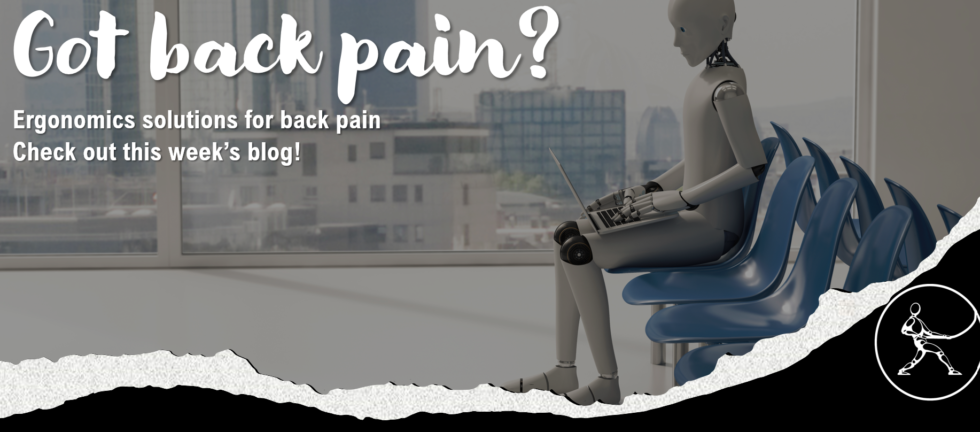If you end most work days with a crick in your back, you’re not alone. Most of us will experience back pain at some point in our lives, and once we’ve had it once, we’ll be susceptible to recurrences. But back pain is not an inevitable consequence of work. And ergonomists know a lot about how to prevent it!
What can you do? Here is some free expert advice, from our team of ergonomists:
![]() Stop…
Stop…
Sitting or standing still for hours at a time. Your body wasn’t meant to be still for hours on end! Create reminders to get up at least a couple of times an hour. You don’t have to take a long break – even a few seconds will help! (Need some help? Check out our new Move-it program.)
Overestimating your strength. We’ve all done it. “No one is available to help, so I’ll just try to lift it, just this one time, and if I can’t, I’ll stop.” But you don’t stop. And you regret it later. Know your limits and work within them!
Wearing cute shoes. Heels, flats and flip flops are great for sitting! But if your job involves standing, walking, lifting, or pushing, bite the bullet and buy supportive shoes with good grip.
Continue…![]()
Using equipment and resources that are provided to you. If you have a cart, a hoist, or special gloves or a power tool, use them. If they’re not perfect, ask for improvements.
Stretching before you lift. It’s not always convenient to arch you back before lifting, but that 5 second stretch can prepare your body for lifting. Take the time. (For more tips like this, check out our Lifting Tips Face-2-Face training and our Lifting tips posters.)
Adjusting your seat so your back is supported. If your lower back is slumped, your upper back and neck can’t be in good postures either. When your back is against the backrest and the lower back curve is supported, you’ll be more comfortable at the end of the day, whether you work at a computer or drive for a living.
![]() Start…
Start…
Getting stronger. Adding strength capacity makes every lift easier. If your current maximum lift is 50 lbs, and your job requires you to lift 45 lbs, you’re working at 90% of capacity. If the job is repetitive, you’ll be at a high risk of injury. But if you increase your capacity to 100 lbs, the job only requires 45% of maximum. It will feel much easier, and your risk will be lower.
Improving your lifting skills. If you find something hard but you see your co-workers doing it with ease, find out what makes them different. Often, people find ways to make a job easier – we call these tips “ergonomic work strategies” or “best practices” and we have a process for identifying them. At the root of every ergonomic work strategy is experience!
Looking for opportunities to make hard jobs easier. Ergonomists have trained eyes for these opportunities, but you’ll know when a job is heavy or awkward. Bring these tasks to your employer’s attention, so they can take action before someone gets hurt. Injuries are not only unfortunate and inconvenient, they’re also expensive, so improving jobs almost always saves money.
Need some help? Contact Carrie@TaylordErgo.com to set up a short meeting.


